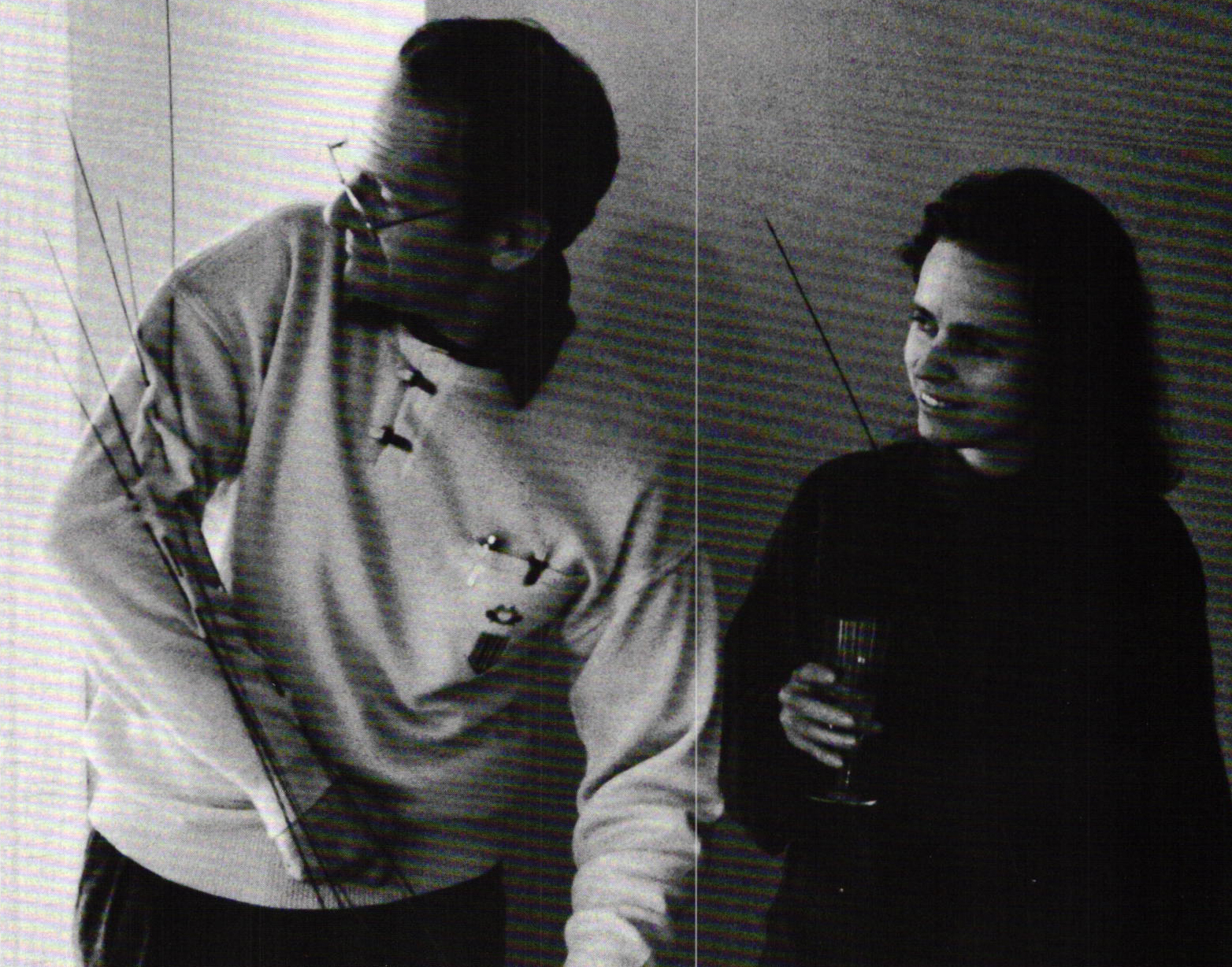Art and Technics: Broaching Subjects
3 Minute Read
This article is one of a series of articles from Metalsmith Magazine "Art and Technics" talking about techniques in craftsmanship and design. For this 1987 Fall issue, Tim McCreight talks about broaching subjects.
~~~~~~~~~~~~~~~~~~~~~~
Picture this: A room in a museum, unadorned white walls, no furniture. The only objects in the room are pieces of stainless steel rod varying in length from 12 to 18 inches. Each rod has been filed to a point on both its ends, and each has been painted black and red. They are leaning against the wall around the perimeter of the room.
At an appointed time and for a span of four hours, selected guests are invited to enter the room and interact with the rods. A cameraman is there making a tape, another takes a few slides. When the time is up, the guests leave, laying their pins in a pile by the door. The show is over.
The name of this work is broaching certain subjects, and it took place in Oslo, Norway in March of 1985. It was conceived and created by James Evans.
I doubt if I'm the only metalsmith to squirm in his seat when the talk turns to performance pieces such as this one. Somehow they seem a bit too weird, a little too far out. I make excuses about being embarrassed to participate in something this social, but that's only a surface dodge. When I probe my anxieties further I find myself threatened by these new directions.
If this is where jewelry is heading, why did I spend all those years developing my technique? Isn't there an important tradition of workmanship, of physical control over a medium, that enlightens and enriches our work? When I think of performance work, there is an irritating tickle down deep in my brain that says, "This can't be real, it comes too easy. It's too glib." The antidote, I say to myself, is Technique, and I pick up my hammer and go back to my anvil.
And what has all this got to do with a column on technique? Everything, I think. Perhaps the root of my uneasiness, or at least my relief from this dilemma, lies in an evaluation of what is meant by that word.
Technique, we all know, is the stuff that goes on at the bench. The way I hold my pliers and my finesse with a saw frame, that's technique. Or is it? The dictionary defines the word as a "systematic procedure by which a task is accomplished." I notice it doesn't mention pliers.
With this in mind. I turn back to James Evans's work. Of immediate notice is the word play. To broach a subject is to approach it cautiously (picture the confused participants entering the gallery). A brooch with two "o"s is of course a pin, like the stainless rods. Subjects are the topics under discussion, or as a psychologist would use the term, the people being examined. Because these people were invited, they were not just any old subjects, but certain subjects. Far from being superficial, there is an obvious intelligence at work here.
In a statement accompanying the work, Evans addresses some of the issues raised in broaching certain subjects. These include an undermining of the traditional association of jewelry with precious materials, its usual display in glass cases and jewelry as heirloom (as an event, this is difficult to pass down in the family). He also dramatically raises questions about the social function of jewelry. By moving far beyond accessory and becoming the stimulus of interaction, he raises questions about why jewelry has been so confined for so many years.
And did all this happen by coincidence? Of course not. As with any other work of art, the end result is the effect of a complex train of invention, decision and action. The benchside technique was minimal, but the "systematic procedure" by which this result came into being represents skill, insight and wit. Technique, I can now see, is more than a list of manual skills. It is an attitude that the artist brings to his or her world. Rather than becoming a wall behind which I must defend my traditional skills, it transforms into a bridge to expanded possibilities.
Tim McCreight is a working craftsman and a teacher at the Worcester Craft Center. He is a contributing editor to Metalsmith and writes this column regularly.
You assume all responsibility and risk for the use of the safety resources available on or through this web page. The International Gem Society LLC does not assume any liability for the materials, information and opinions provided on, or available through, this web page. No advice or information provided by this website shall create any warranty. Reliance on such advice, information or the content of this web page is solely at your own risk, including without limitation any safety guidelines, resources or precautions, or any other information related to safety that may be available on or through this web page. The International Gem Society LLC disclaims any liability for injury, death or damages resulting from the use thereof.
The All-In-One Jewelry Making Solution At Your Fingertips
When you join the Ganoksin community, you get the tools you need to take your work to the next level.
Trusted Jewelry Making Information & Techniques
Sign up to receive the latest articles, techniques, and inspirations with our free newsletter.
